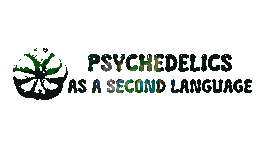Amanita Muscaria In a nutshell: The cultural impact of the fly agaric
That being said, let us delve into the details of this species!
Cap or Pileus
Orange-red to pale yellow or almost white. Younger Amanita Muscaria are usually brighter and fade from the margin inward as the plant matures. They present floccose scales, the wrapper remains and scattered on the cap. The margin is often striate, 3-6 inches broad.
Stem or Stipe
Usually white but can be slightly tinged with yellow. Pithy or hollow. Its base is ovate, covered with scaly margins of the wrapper. 4-6 inches long.
Veil and Ring or Anniilus
Its veil covers the gills of the young fungi, and as the mushroom matures, it turns to a collar-like ring on the stem.
Gills or Lamellce
White or slightly tinged with yellow and present various sizes in length.
Spores
White, broadly elliptical.
Flesh
White, tinged with yellow under the epidermis.
Habitat
Along roadsides, borders of fields, and groves of coniferous trees. It prefers poor soil, gravelly or scanty. It grows in groups or singly.
Time
From June until freezing weather.
When young, Amanita Muscaria has an egg-like shape and then develops to dumbbell-shaped. As parts within expand, the wrapper breaks up into scales, so the convex, unexpanded cap gets covered with more or less concentric fragments of the wrapper, and the bulbous stem is covered with rings of ringy scales. When the stem is expanding, these scales are left on the bulbous base, while the fragments on the cap are widely separated by the growth of the cap.
When it comes to smell, the opinion becomes divided. Some say it has a savory odor. On the other hand, some say that besides the earthy smell, the mushroom has no distinct smell.
The mushroom got its nickname, Fly Agaric, for being particularly interesting to flies, and yet for them to sip its juices, it means death. Usually, when you find an Amanita Muscaria, you might find a circle of dead flies lying under its cap.
Fungi are all around the world, paving Earth through mycelial networks. Some fungi remain obscure due to their rare nature. Meanwhile, some became nurtured by our society and vividly present in our culture and traditions as well as a representative of the mushroom kingdom. We are talking about the unique and fascinating Amanita Muscaria.
Night to the Soma-drinker come, for his enjoyment, these pure drops,
The Somas mingled with the curd.
Thou, grown at once to perfect strength, wast born to drink the Soma juice, Strong Indra, for preeminence.
O Indra, lover of the song, may these quick Somas enter thee:
May they bring bliss to thee the Sage.
-Rig Veda, HYMN V. to Indra
If this theory is correct, this mushroom has been used for around 4000 years. Unfortunately, due to the lack of Vedists to collaborate with botanists and emphasizing the need for literal translations of the Rig Veda, until today, what Soma might be remains a mystery.
Leaving us with the only historically accurate use of this mushroom, the orgiastic and shamanistic use amongst the Fino-Ugrian (Ostyak and Vogul.) in Western Siberia and three predominant tribes, the Chuckchee, the Koryak, and Kamchadal, in Northern Siberia. These tribes were very fond of the intoxicating effects of the mushroom before they learned about other intoxicants like alcohol, a substance introduced to those tribes roughly around the 1970s.
Traditionally, they had various methods of consumption of the mushroom sun-drying it, roasting it by the fire, drinking the milk from Amanita Muscaria fed reindeer, and occasionally as a brew made from available plants that survived the extreme Siberian temperatures, such as species of Epilobium and berries from the Vaccinium family.
Ritualistically, members of the tribe would drink the urine from another member of the tribe or a reindeer who ate the mushroom to consume less of the mushrooms and spread the hallucinogenic effects of the mushroom to other members of the tribe since the psychoactive alkaloids present in the mushroom remain unchanged after secretion or still active derivatives.

Outside of Siberia, Amanita Muscaria has made its name in Lithuania. Documented by the well-regarded historian Professor Marja Gimbutas, the mushroom became an essential part of traditional Lithuanian wedding feasts as a beverage mixed with vodka. Furthermore, Lithuania saw the potential in the fungi shipping significant quantities of Amanita Muscaria to the Lapps in Northern Europe, where the mushroom is used for shamanic purposes, thus influencing global culture.
This influence kept expanding and engraining in our culture, and today, it is safe to say that everyone knows the iconic mushroom. The species is introduced through children’s books, playgrounds, cartoons, riddles, illustrations, and video games. The connection between children and this fungus is still unknown. However, in some cultures, it is believed that the mushroom speaks the Language of Children, and one can only find the mushroom with the aid of a child.

Commonly, people believe that evidence of the Amanita Muscaria is present in the German riddle “Ein Männlein steht im Walde.” Roughly translated to “A little man stands in the forest” in the folk tale of Hansel and Gretel.
Ein Männlein steht im Walde
Ganz still und stumm,
Es hat von lauter Purpur
Ein Mäntlein um.
Sagt, wer mag das Männlein sein,
Das da steht im Wald’ allein
Mit dem purpurrothen Mäntelein?
Das Männlein steht im Walde
Auf Einem Bein
Und hat auf seinem Haupte
Schwarz Käpplein klein.Anm. 1
Sagt, wer mag das Männlein sein,
Das da steht im Wald’ allein
Mit dem kleinen schwarzen Käppelein?
A little man stands in the forest
Completely still and mute,
It has, all of a sudden, a cloak
Made entirely of purple.
Say, who may that little man be,
Standing there in the forest alone
With the little purple cloak?
The little man stands in the forest
On one leg
And on its head, it wears
A small black cap.
Say, who may that little man be,
Standing there in the forest alone With the little black cap?”
Despite the common belief, the musician Hans-Joseph Irmen, explains how the correct solution to the riddle is actually supposed to be the rose hip!
“In fact, the rose hip does not grow alone in the forest, but at least at the edge of the forest, ‘am Rain’, and its fruits are numerous together. In the first verse, Hoffmann shows the guesser the wrong way; everyone thinks of the fly agaric first. Only when the ‘black cap’ becomes known as a further indication in the second verse does it become clear that it is the rose hip. The contradiction between the two stanzas suggests that the poet sought to unite incompatible models.”
Hans-Joseph Irmen
Amanita Muscaria’s influence on Christmas
Amanita’s cultural impact goes even beyond when Jonathan Ott linked this mushroom and Christmas, relating the red and white pattern of Amanita with the clothing pattern of Saint Nicholas (Santa Claus) and the flying reindeer with ingesting the reindeer urine after they had eaten the mushroom by tribes in Siberia. Flying reindeer could also represent the reindeer that ate the mushroom.
James Arthur marked these links even further in his book Mushrooms and Mankind, linking the Christmas tree and gifts wrapped in red and white below the tree to the symbiosis between the roots of coniferous trees and the mycelial networks of the Amanita Muscaria shroom.
“So, why do people bring Pine trees into their houses at the Winter Solstice, placing brightly colored (Red and White) packages under their boughs, as gifts to show their love for each other and as representations of the love of God and the gift of his Sons life? It is because, underneath the Pine bough is the exact location where one would find this “Most Sacred” Substance, the Amanita muscaria, in the wild (in Nature). These mushrooms grow in a symbiotic/mycorrhizal relationship with the Pine tree, which means they always grow underneath it. The symbolic placing of gifts under the tree at Christmas is a sort of proxy-present-giving action, whereby the celebrants ritually mimic the work of God/Santa/Nature, by placing under the tree a gift (actually The gift). Big clue here: Winter brings rain; rain brings mushrooms, In the mountains, at Christmas time, under the Pine trees. Then and there will you find that which unlocks the key mysteries of the Universe, through a multi-dimensionalizing of the consciousness in a way that no other known substance can. This Gnosis (joining together of your mind with the mind of the Universal Consciousness) is what the Sages, Mystics, Teachers, and Prophets were attempting to communicate through their rampant symbolism. (Had they not feared persecution, they may have spoken of it openly and directly in public documents.)”
– Excerpt of Mushroom and the Mankind by James Arthur
Fly agaric chemsitry:
Regardless of its continuous presence in Children’s tales, don’t be mistaken. This mushroom is no child’s play.
Amanita Muscaria contains ibotenic acid, a compound shown to be highly neurotoxic when injected directly into the brains of mice. Also, the possible reason why the mushroom has a red mucous layer separating the parasol-shaped cap from its white gills. The presence of ibotenic acid is one of the reasons why Amanita Muscaria is depicted as poisonous and potentially deadly in several books and guides. Such claims have created a discordance between scientists and foragers. Some believe that these fungi are a brain lesioning agent and back up their claims through cranial injections
Meanwhile, some claim that consuming Amanita Muscaria is safe if the mushroom is dried, pickled or using any traditional methods, others go even as further as saying that consuming low dosages mushroom without any preparation is safe, and the neurotoxic effects are exaggerated. We know that Amanita muscaria contains ibotenic acid, but how is it present in the mushroom’s composition?
This question remained a mystery until 1964. Eugster and his co-workers had a potential theory based on co-occurring metabolites to explain the biosynthesis of the compound.
The theory is that the compound is derived from 3-hydroxyglutamate. However, upon analysis, no 3-hydroxyglutamate was found in Amanita muscaria, leaving the biosynthesis of the compound a mystery until today
So, what causes this mushroom to be psychoactive?
Contrary to popular belief, Amanita Muscaria has no resemblance to other magic mushrooms and works in a completely different way.
Unlike the psilocybe genus, the fly agaric doesn’t have psilocybin or any serotonergic compound. Instead, the mushroom contains muscarine and muscimol.
Historically, scientists thought that muscarine was the compound responsible for the psychoactive compounds of the mushroom since it binds with muscarinic acetylcholine receptors, similar to nicotine and scopolamine. However, this belief was de-throned after scientists found that the levels of muscarine are minute and too low to play a role in the psychoactivity of the mushroom.
Science set to sail to find what made this mushroom psychoactive, and it all changed when they noticed a peculiar yet abundant alkaloid present in the mushroom, muscimol.
Muscimol, also known as agarin or pantherine, works very differently from classic psychedelics. The compound is a potent GABA-A agonist, acting as an oneirogen (sedative/hypnotic), subjectively similar to the hypnotic drug Ambien (Zolpidem).
Stay tuned for the second part of this article.
Amanita in a nutshell birth of Gaboxadol and pharmacological value of Amanita.
Have a Merry Christmas, sending love.


